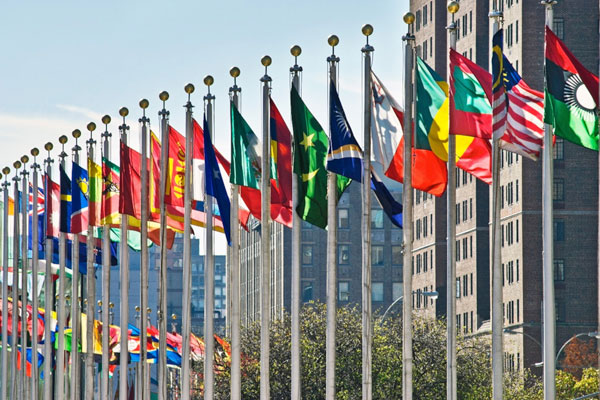 The United States government is committed to a digital future. That’s why the U.S. National Archives and Records Administration (NARA) has set ambitious digitization objectives for federal agencies, for example.
The United States government is committed to a digital future. That’s why the U.S. National Archives and Records Administration (NARA) has set ambitious digitization objectives for federal agencies, for example.
As the federal government steadily moves toward those goals, it might be worth taking a step back and understanding where the U.S. government’s digital mandates fit into the global community. After all, virtually every government in the world is interested in the benefits of digital operations and record-keeping. “Governments at all levels are heavily interested in the digitisation [sic] agenda — it’s moved into the core of what we do everywhere,” says Rikke Zeberg, director of Denmark’s Agency for Digitisation [sic].
So, how is the U.S. faring in its digital endeavors compared to other nations? The answer depends.
Different measures of digital success are defined by different criteria, and the U.S. may rank more or less favorably as a result. For example, the biannual E-Government Survey from the United Nations, which ranks the world’s best-performing digital governments, puts the U.S. at #11.
Of course, the competition is fierce because many governments have set even more ambitious objectives than the U.S. itself. The ranking may also be out of date: the last survey is from 2018, and the next won’t be released until later this year. Two years is a lifetime in digital terms.
At present, the U.N. puts Denmark in the top spot. “I think that’s one of the things that’s unique in Denmark: this cooperation between the local level and the national level,” said Zeberg. “This means that we can give citizens a digital public sector that’s comprehensive and that appears as one unit from the user’s perspective.”
Other reports do put the U.S. in the lead. For example, the IMD Business School’s 2019 World Digital Competitiveness Ranking put the U.S. in the top spot thanks to its concentration of relevant knowledge and what the WDCR calls “future readiness.”
However, the WDCR also ranks the U.S. only in 25th spot under the training and education sub-category. Indeed, digital literacy presents one potential area of concern, especially when compared to many Asian and European nations. A digital government can only do so much if the federal workforce or its citizens lag in their ability to understand, access, and properly utilize digital solutions. And according to the National Skills Coalition, one-third of American workers lack digital skills.
Compare that to a country like Finland – another top-performer when it comes to digital government – where 75% of the population has basic digital skills (compared to 57% for the European Union as a whole).
Another source, BBVA Research, puts the U.S.’s digitization index at 0.95 – second only to Luxembourg’s full 1.0 rating. The BBVA notes that regulation plays a pivotal role in digital adoption; smart regulatory frameworks incentivize digitization without overly restricting digital deployments. Here too the U.S. leads much of the world.
These global comparisons can be misleading, however. It’s impossible to compare on a one-to-one basis because many nations are utilizing such divergent strategies and can have wildly different goals. The real question is less about how the U.S. is faring compared to other nations and more about its internal progress: how much has your agency advanced in digital performance over time? If your group still falls short of desired performance levels, it may be time to take a second look at your digitization plans, protocols, and tools.
About PSL
PSL is a global outsource provider whose mission is to provide solutions that facilitate the movement of business-critical information between and among government agencies, business enterprises, and their partners. For more information, please visit https://www.penielsolutions.com or email info@penielsolutions.com.

